【Interview】2020 Grand Prize winner:HAMU
We interviewed HAMU, the Grand Prize winner of COPIC AWARD 2020.
When she found out that the Grand Prize was a set of Copic Sketch markers including all 358 colors, she decided to enter the AWARD so that the children participating in her own painting workshops could enjoy the complete color range of Copic. This interview took place in November of 2020 when the prize was delivered to her.

ーOnce again, congratulations on winning the Grand Prize of COPIC AWARD 2020.
HAMU:Thank you very much! I was very happy when I heard that I won the Grand Prize. My family, parents, friends, and everyone who has supported my creative activities were also very happy, and it was amazing.
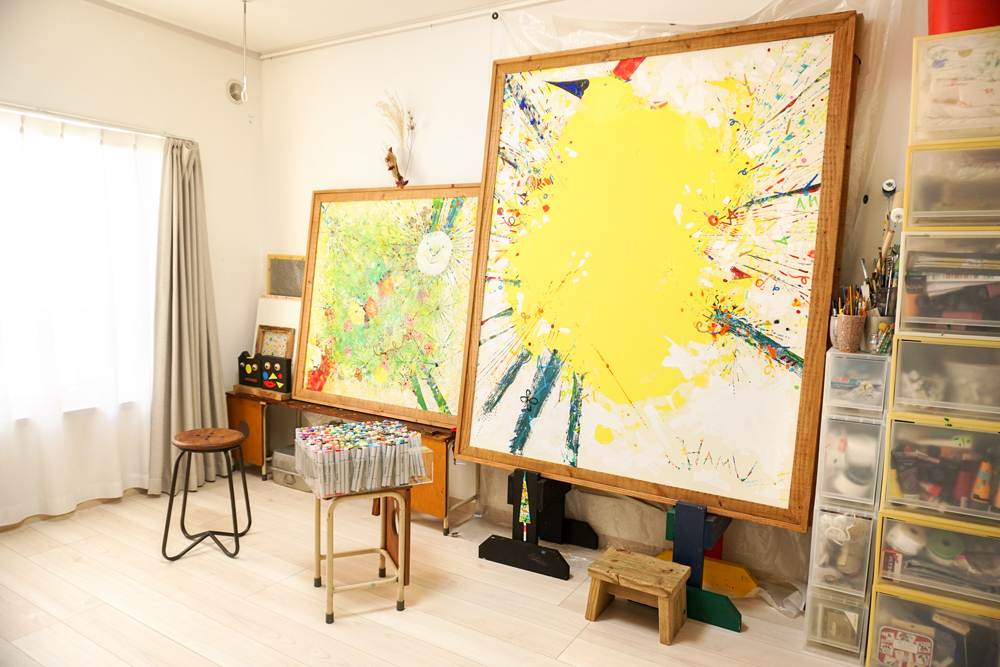
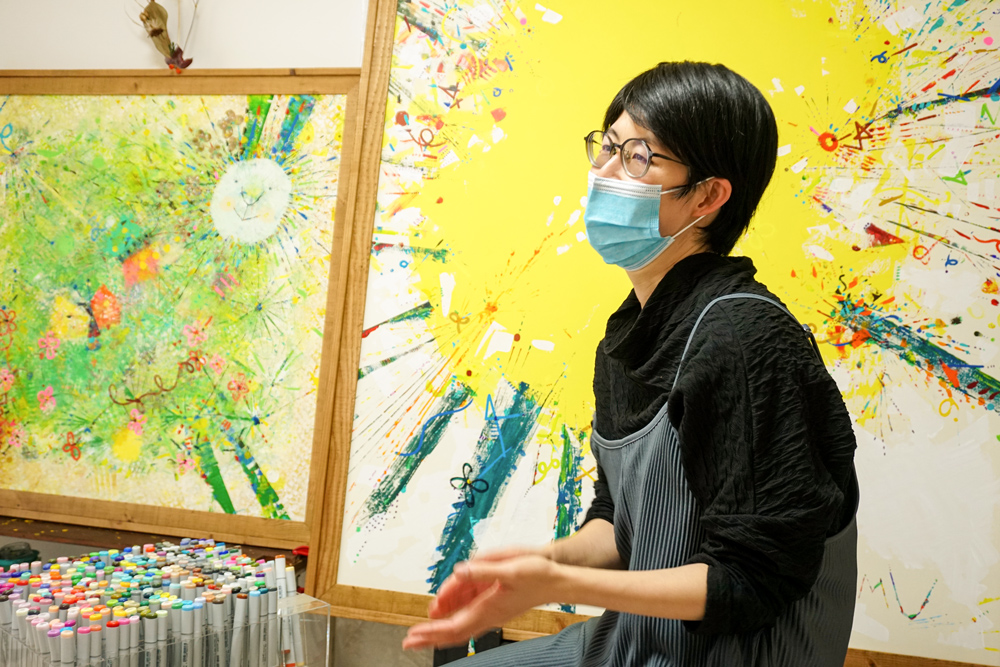
ーHere we are in your studio and overwhelmed to see so many of your works this close. Also, we are surprised to find out two paintings that are currently in progress. What inspired you to create these works?
HAMU:Every year, I paint at least two large size paintings. For the painting on the right, I started painting mainly yellow (I call it happy yellow) to make people feel cheerful when they see the work, as the entire world was in a gloomy mood due to COVID. I wanted to change the image of the coronavirus that we see on TV every day with a brighter impression, so I made the round shapes and spikes of the virus more colorful.
In the painting on the left, I wanted to bring greenery to the audience through my paintings, as I am always healed by the green trees that I see from my favorite cafe. I also happened to find about 100 four-leaf clovers growing near my house, so I collaged them to wish the audience good luck. I also decorated the hole in the frame with dried flowers, which created a beautiful silhouette of a plant that changed with time. So, this is a work that borrows from the power of nature.
I tend to get overly emotional when I am working on only one painting, so I work on two simultaneously. When I'm not feeling good, I move on to the other painting, and when I'm in a good mood, I use the momentum to complete both paintings. This method helps both works turn out well and gives a certain feeling of comfort.
ーIn the first online interview, when we informed you of the AWARD result, you described yourself as "just a housewife," but looking at your career and works, we don't feel that way at all. How long have you been active as an artist?
HAMU:When I was in high school, one of the things I did on my days off was sell my own paintings on a street under an overpass.
Later, I went to art school and had a class where we had to submit a 100 size painting to a competition, and I won a prize for my first entry. But more importantly, I enjoyed creating that piece of art. Ever since then, I have been interested in big paintings. While in school and after graduation, I showcased my small paintings in solo and group exhibits and even sold them on the street. There are many different drawing genres, such as picture books, illustrations, and design, so I studied them one by one through volunteer work or introductions from people, or I went to see famous artists. I kept searching for what I really liked. Every genre has its own good points, but they didn't feel right to me...
I decided to keep drawing, so I considered my art income as a supplementary income and covered my living expenses with part-time jobs such as cleaning, cooking at restaurants, and working as a staff member at a zoo. But I chose jobs that I wanted to experience, and that made me excited.

ーYou had a variety of jobs that were not directly related to art. And your style is completely different from your current work.
HAMU:I have learned a lot from people in various professions outside the world of drawing. My work has been influenced by my past work experiences and the stories I have heard from others.
When I graduated from high school, I was very confused about what to do with my life. I had two choices: farming or drawing. I thought to myself, "If I die tomorrow, what is the best way to live that I will not regret?" then I chose drawing. I really wanted to do both, but it became difficult due to my physical condition.
In my early twenties, my drawings were probably darker. I didn't have much money, so I drew only with pencils, pens, and black ink, so it was all black and white. For example, I drew this picture for a class project, and although the evaluation was reasonably good, I was not satisfied with it.
When I had a child in my thirties, my child taught me that everyone deserves to be loved from birth. After that, my drawings somehow became more colorful.
ーSo you mean your creative activities started to work out after you started to draw the way you like?
HAMU:It took me a while to get things right. There are many wonderful artists out there, and I wanted to leave the things I was not good at to them and focus on what I was interested in.
That's why I was very happy when the judges, Mr. Matsushita and Ms. Tsumori, commented that my work "shows that this artist really likes to draw.” It was the first time I was praised in that way.

ーWhen did you start organizing the workshops that led you to enter the AWARD event?
HAMU:I have been holding workshops for about two years now. We were fortunate enough to be approached by a nearby design firm, and we are using their space. In my workshop, I don't teach the children how to draw, I just prepare a large piece of paper and various art materials. The most important thing I try to do is to create a fun atmosphere.
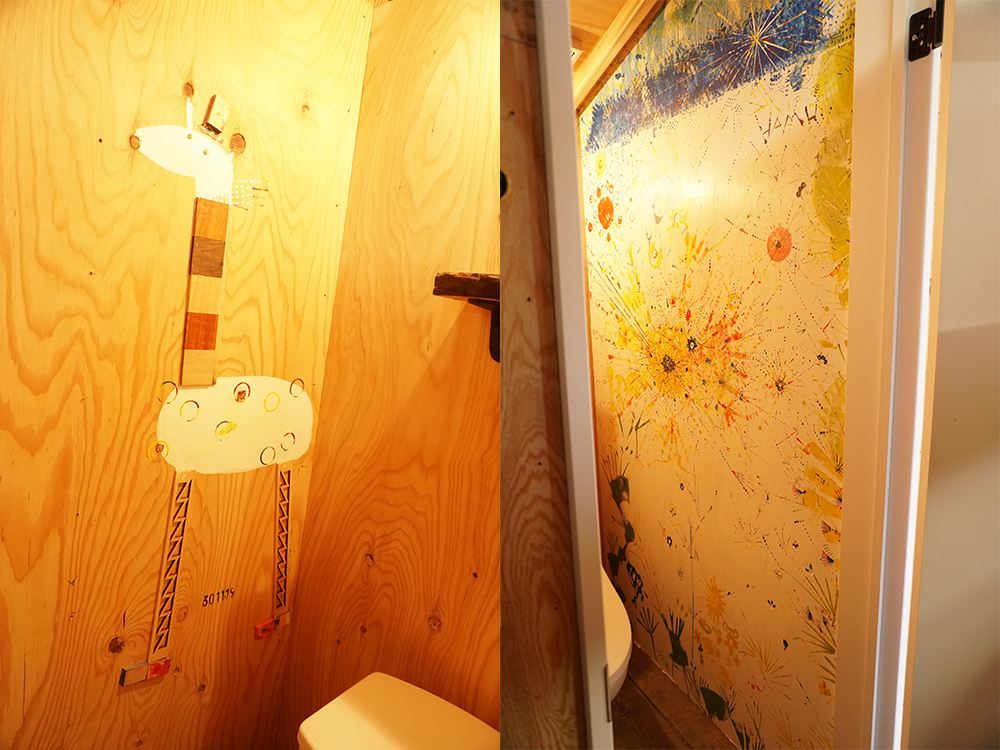


ーWhat made you decide to hold the workshop?
HAMU:It's really important to play freely in childhood. I wanted kids to experience a time when they were allowed to do whatever they wanted, even if they made mistakes. I thought it would be easy for me to do this in the context of art, so I started by preparing an environment.
Copic markers are very popular among kids, and the way they look at the Copic is amazing. I've always thought that if they could use all the Copic colors, they would enjoy it more, so I'm glad we were able to make it happen.
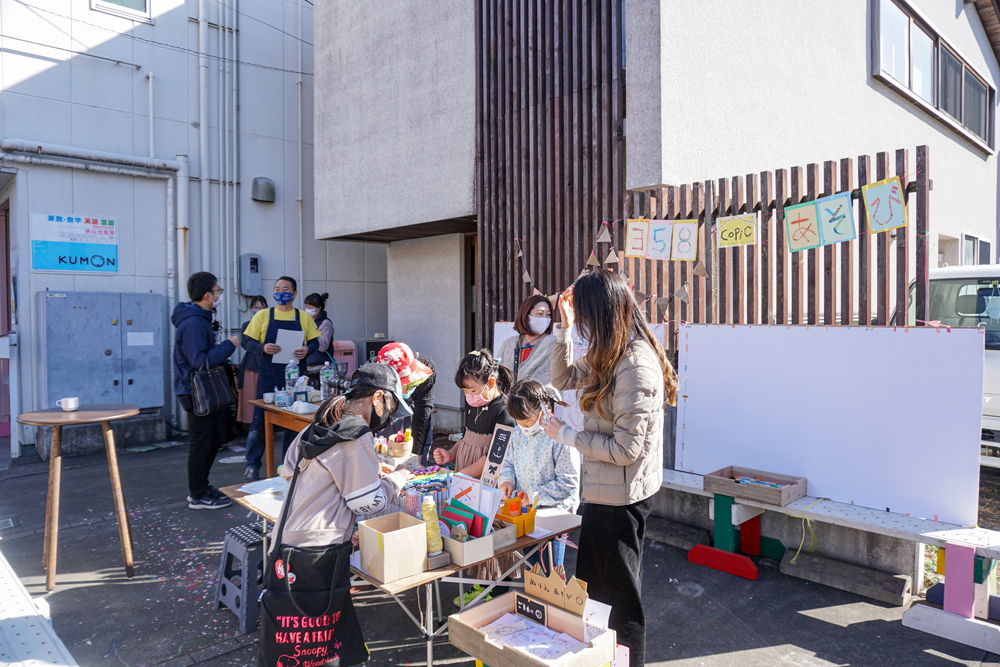
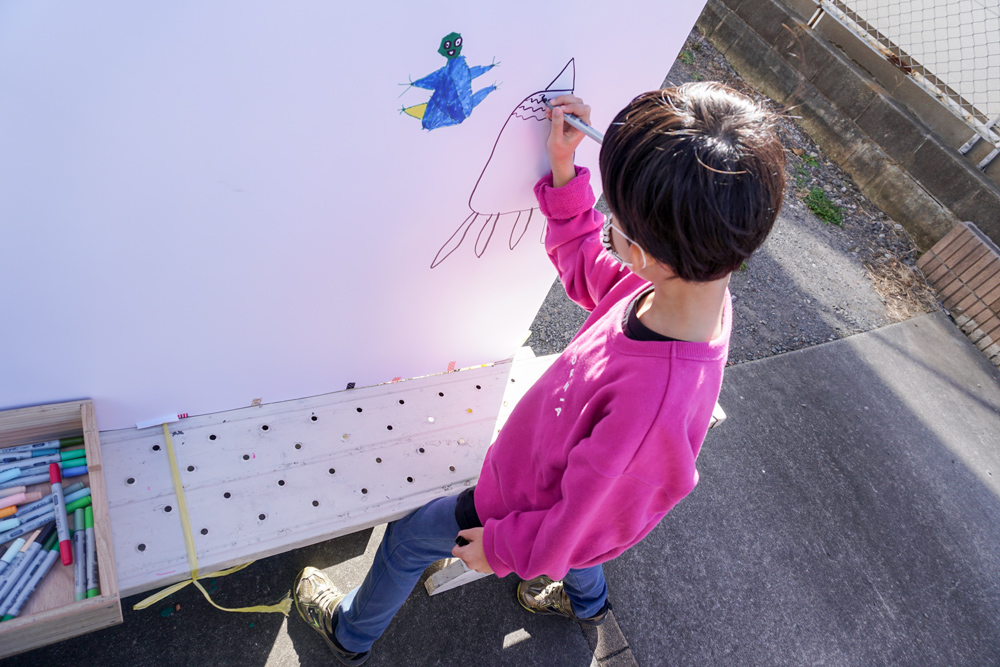
ーCould you tell us about the story behind the creation of your award-winning work, "silk hat cat"?
HAMU:I found out about COPIC AWARD when I saw a beautiful banner ad on social media. Later I learned that the award event allowed the use of art materials other than Copic, I thought this was an opportunity I couldn't miss, so I applied. I usually draw with acrylics, but I've always thought it would be beautiful to layer Copic over acrylics, as the colors of the Copic would settle well.
ーDo you usually draw on large size canvases?
HAMU:I like canvas sizes of about 100 or 120 because they make me feel free and open-minded. With smaller sizes, I tend to want to draw neatly, and the lines become strained. For COPIC AWARD, the original canvas size was too big, so I trimmed it down to the specified size and submitted it. By trimming, I was able to create a piece containing some kind of "contingency" that I had not planned, which was very good.
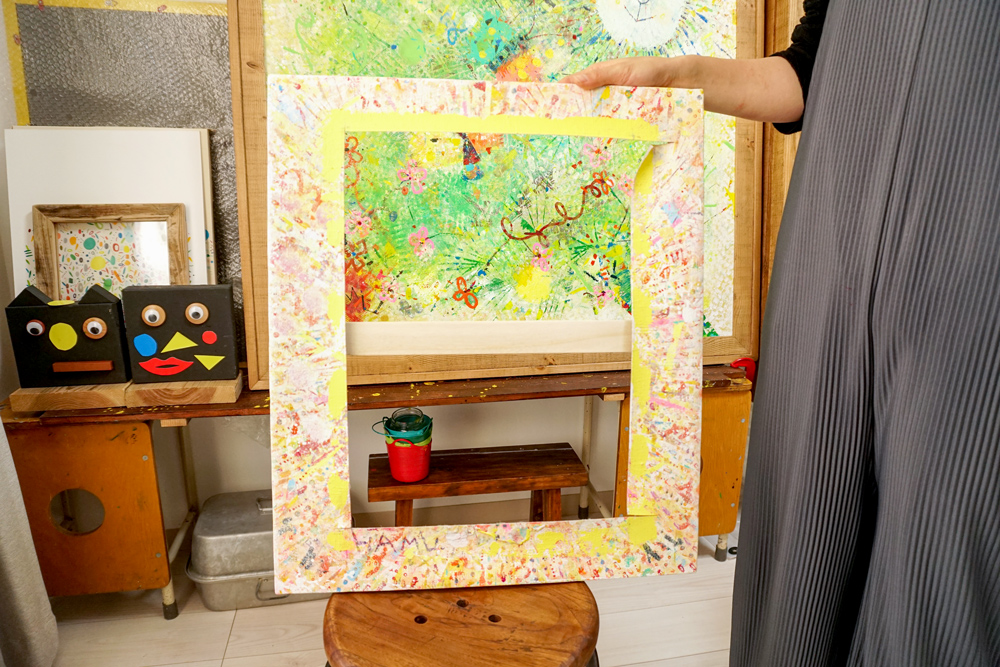
ーIn addition to Copic markers and acrylics, what other art materials do you use?
HAMU:I don't care much whether or not if it is digital or analog, and I use a variety of art materials. I draw my picture diary on my iPad. I utilize the digital concept of layers in my analog works as well. Sometimes I use only pencils, and sometimes I use natural objects and even the trash that comes out when I draw.
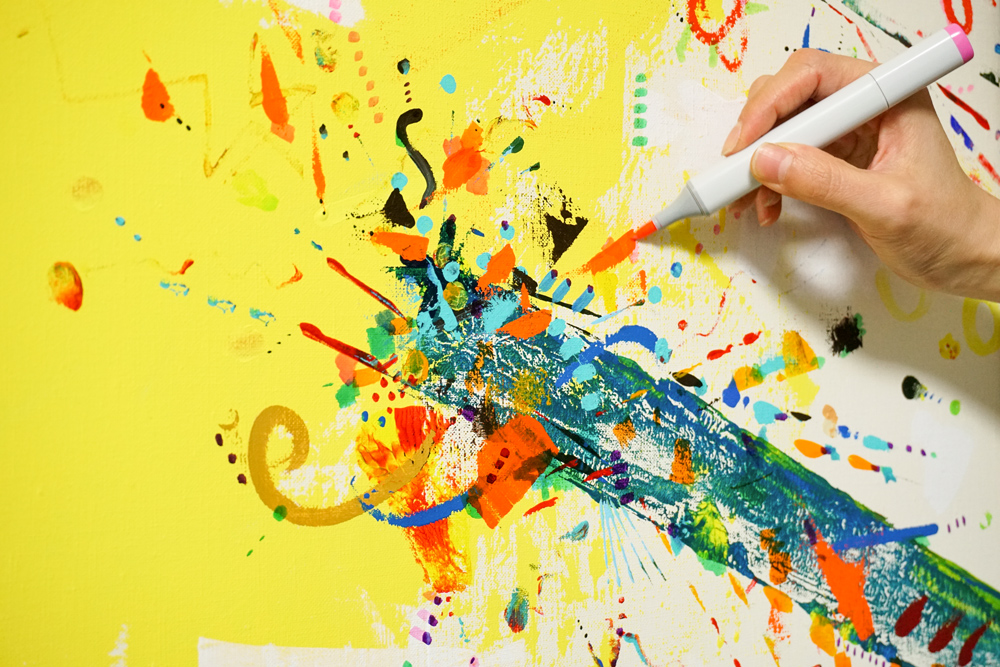
ーIt looks like you often use the technique of adding several single colors to a picture, and not so many gradients.
HAMU:That's a good point. Indeed, I don't do gradations or color mixing often. Art materials are beautiful just as they are, and I feel that the materials used for art are filled with the wonders of the earth and human technology. I want to enjoy the color of the ink itself, and I guess this is why I don't mix colors too much.
ーNow you have all 358 colors of Copic in your hand. Do you have a favorite Copic color?
HAMU:Blue-green and mint are my favorite colors, so the Color Family "BG" makes me very excited. I feel that these colors are not common in other paints.
I'm also interested in the many shades of gray! I haven't had much of a chance to use them so far, but it might be fun to use grays for my next size 100 painting. I also think that pale colors such as "0000" and the beige colors of Color Family "E" are very calming colors.
ーIs there anything that you specifically pay attention to or keep in mind when you create your artworks?
HAMUさん:I try not to put too much of my own thoughts into my drawings because I want everyone to be relaxed looking at them. I don’t intend to create masterpieces that will go down in history - I always try to create something that brings people joy just by looking at them. I would be happy if my works could blend into the space where people live in and become a comfortable presence.

She was a friendly and warm person, just like the image of her work. All of her pieces that we saw had a gentle and powerful impression and seemed to represent her personality.
We're looking forward to seeing more of her wonderful artwork!






